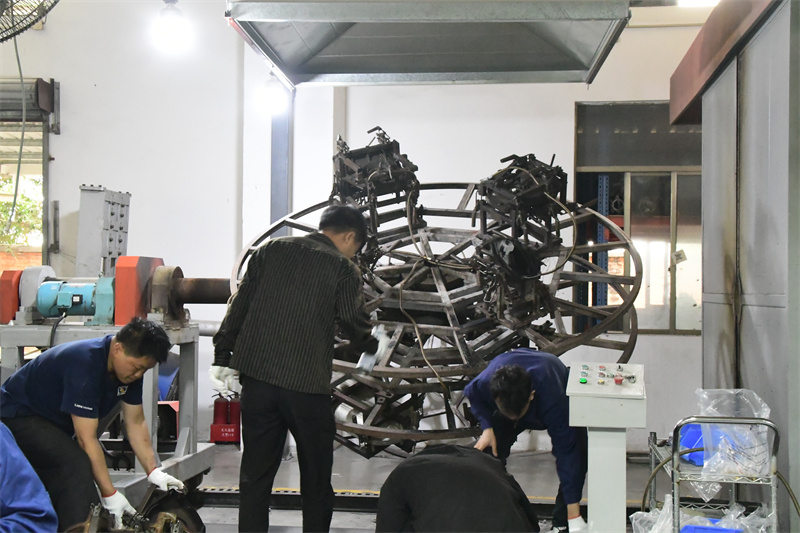Steps for Structural Inspections in Rotational Molding Process
 Mar 04,2024
Mar 04,2024

Steps for Structural Inspections in Rotational Molding Process
During the rotational molding process, in order to ensure the quality and performance of the products and parts, structural inspection is required. Below are the steps for structural inspection during rotational molding.

1. Preparation
Before performing rotational molding, preliminary preparations must be made for the plastic to be produce. This includes choosing the right plastic material, adjusting the material’s humidity and temperature, etc. In addition, it is necessary to prepare the equipment required for rotational molding, such as roller machines, heating devices, etc.
2. Determine Product Structure
Before rotational molding, the structure of the part needs to be determined based on the product's design drawings. This includes the shape, size, weight, holes, etc.
3. Visual Inspection
Check for any visible defects, such as cracks, bubbles, or irregularities in wall thickness. Pay close attention to areas with complex geometries or stress concentrations, as these are more prone to defects. Use adequate lighting and magnification tools if necessary to identify any surface imperfections.
4. Dimensional Measurement
Measure the dimensions of the rotational molded products to ensure it meets the required specifications. Use calipers, gauges, or other measuring tools to check the part's length, width, height, and wall thickness. Compare the measurements to the product's design drawings or specifications to identify any deviations. Ensure that the part exhibits symmetrical dimensions and uniform wall thickness, with no significant variations.
5. Sectioning and Microscopic Examination
If any defects or irregularities are detected during the visual inspection, perform sectioning to obtain a cross-sectional view of the part. This involves cutting the part at specific locations and examining the cut surface under a microscope. Microscopic examination helps identify internal defects, such as voids, delamination, or material density variations. Analyze the microstructure to assess the quality of the material and the uniformity of the melting and cooling process.
6. Tensile and Impact Testing
Conduct mechanical testing, including tensile and impact tests, to evaluate the strength and durability of the rotomolded products. Tensile testing measures the part's resistance to stretching and breaking, while impact testing assesses its ability to withstand sudden loads or impacts. Compare the test results with the specified mechanical properties to ensure compliance.
7. Pressure Testing
Perform pressure testing to evaluate the part's ability to withstand internal or external pressure without deformation or failure. This is particularly important for parts that will be subjected to pressure during normal use, such as water tanks or containers. Apply a specified pressure and inspect the part for any signs of leakage, deformation, or collapse.
8. Environmental Stress Cracking Resistance (ESCR) Testing
If the rotational molded part will be exposed to chemicals or environmental stresses, perform ESCR testing to assess its resistance to cracking or degradation under specific conditions. Subject the part to a defined stress and exposure to chemicals or environmental factors, and monitor for any signs of cracking or deterioration over time.
The steps outlined above pertain to the structural inspection process within rotational molding. By conducting thorough structural inspections, potential issues can be identified, allowing for prompt action to enhance both the quality and efficiency of rotational molding operations. Furthermore, these inspections contribute valuable insights and data that can drive continuous product development. Should you require additional information regarding rotational molding techniques, please feel free to contact us.
 Tel: 0086-13632687993
Tel: 0086-13632687993  Email: roto@lightvenus.com
Email: roto@lightvenus.com

 Home
Home What Methods are Commonly Used to Heat the Rotational Molding Machines
What Methods are Commonly Used to Heat the Rotational Molding Machines  You May Also Like
You May Also Like



 Tel
Tel
 Email
Email
 Address
Address








